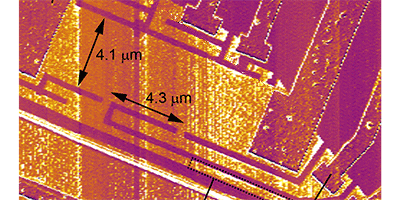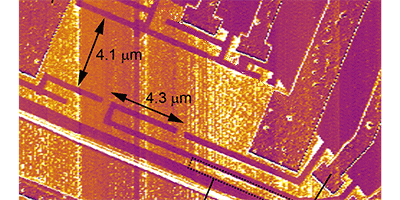Roadblocks to Spin Travel in Graphene
When it comes to applications, graphene has many attractive properties, among them its theoretical ability to transport electrons with spins all pointing one way over large distances. This property would make graphene useful in spintronic devices, where information is carried in the up or down state of electron spins. But experiments have consistently shown that a measure of how long a spin-current stays polarized—the spin-relaxation time—is as much as times lower in graphene than predicted. In Physical Review Letters, Mark Lundeberg and colleagues at the University of British Columbia, Canada, present experiments showing that, contrary to what was previously thought, magnetic defects may be what’s hindering graphene’s performance.
In small samples of graphene and at low temperatures, the electrons can be described as coherent quantum-mechanical waves with an amplitude and phase. Lundeberg et al.’s experiment is sensitive to how these electron waves interfere with themselves as they scatter from imperfections, such as defects or ripples. The authors applied a voltage between two metal contacts on a strip of graphene, micrometers long and micrometers wide, while changing the strength of a magnetic field piercing the strip. In a much larger piece of graphene, the current through the strip would barely change with the small fields used in the experiment. But in the authors’ microscopic sample, interference effects cause the current to fluctuate rapidly with the magnetic field. From an analysis of these fluctuations, the authors conclude that the primary source of electron spin relaxation is magnetic defects—and not, as researchers have widely assumed, the spin-orbit effect. The origin of the defects remains uncertain. – Jessica Thomas





